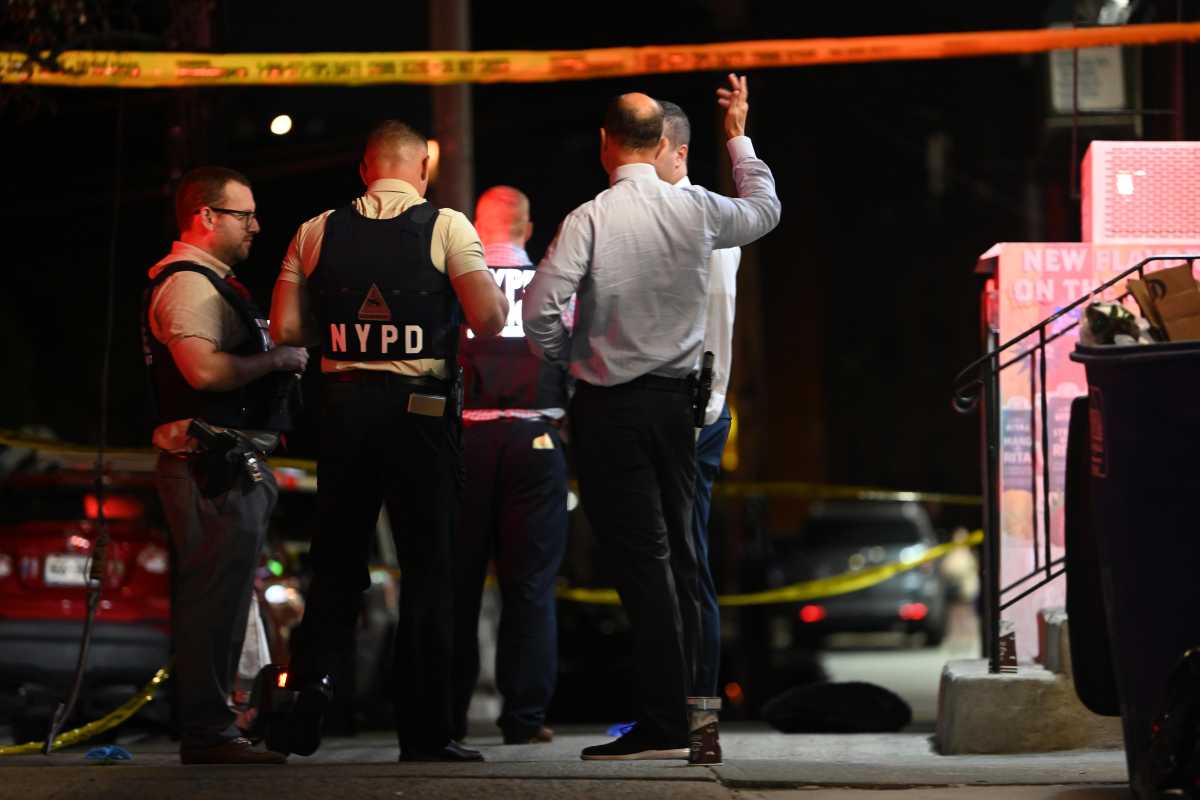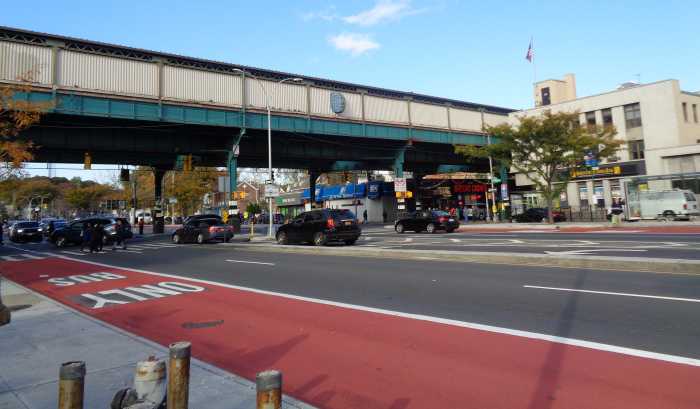Every subway train in NYC will have two uniformed police officers on board between 9 p.m. and 5 a.m. daily, Gov. Kathy Hochul said during her State of the State address on Tuesday — adding that other major safety measures are coming to the city’s transit system this year.
The governor said she is working with the NYPD to increase patrol on platforms and trains. Including the police presence on every in-service, overnight train, approximately 750 NYPD officers will be stationed across NYC, with an additional 300 in the train cars themselves.
According to Hochul, the extra enforcement will prioritize 30 subway stations and transit hubs that account for 50% of crime in the transit system. It is not clear right now which daytime trains will receive extra security or when the initiative will start. Overnight trains will have police patrols on board for the next six months.

But while welcoming the support from Albany, Police Commissioner Jessica Tisch said it was critical for the state to address “surging recidivism” that has created a “revolving door” in the criminal justice system “that has allowed too many violent and repeat criminals back on the streets.”
The city’s top cop applauded another announcement in Hochul’s State of the State: the governor’s support for new changes to discovery laws to help keep recidivist individuals locked up.
“The most effective way to prevent crime and make people feel safe in the subway system is to assign more police resources there. This proposal will allow us to put more officers on the trains, including two officers on every overnight train,” Tisch said. “I thank Governor Hochul for these proposed changes to discovery laws that have prevented us and district attorneys from keeping violent criminals off our streets.”
The safety measures come after a spate of violent incidents that rocked NYC subways recently, including on New Year’s Eve when a man, who was standing on the Uptown-bound platform of the 18th Street station on the 1 line in Chelsea, was pushed onto the subway tracks and struck by an oncoming train, nearly losing his life.
Platform barriers, new turnstiles

Hochul will also provide the funding to install platform edge barriers at more than 100 additional stations by the end of 2025. As for which stations will get the barriers, it all depends on feasibility, at least at first. Hochul will prioritize stations with standard car-stopping positions in segments of the 1, 2, 3, 4, 5, 6, 7, F, M and L trains.
These trains will be further prioritized at stations with higher ridership and island platforms.
“Keeping New Yorkers safe is my top priority — and that means making sure our subways feel safe and are safe for every single rider and worker,” the governor said. “No one should be in fear that they’ll be a victim of crime as they commute to work, go to school or enjoy a night out — that is why we’re partnering with law enforcement, improving our infrastructure and ensuring that New Yorkers struggling with mental illness get the support they need.”
Hochul said she will also invest in modern turnstiles in more than 20 stations in 2025, with more to come in 2026, to fight fare evasion.
Meanwhile, MTA Chair and CEO Janno Lieber applauded Hochul’s efforts through a statement.
“Mass transit is one of the few things that helps make New York affordable, so it’s no surprise that Governor Hochul – with her larger affordability agenda – is continuing to make it a priority in 2025. Her support for the new infrastructure-focused Capital Plan is critical as we look to secure funding in Albany this legislative session. We also need to ensure that the subways, buses and commuter railroads are safe and feel safe, so we welcome the governor’s commitment of additional resources for transit safety, including more police deployments, installation of platform edge barriers and new fare gates.”
Transit riders advocacy groups are underscoring the importance of improving subway safety.
“All New Yorkers deserve safe, reliable, affordable and accessible buses and trains,” Danny Pearlstein, policy and communications director for the Riders Alliance, said. “Fixing the subway, which is more than a century old and has suffered generations of disinvestment, is non-negotiable. Riders look forward to engaging Governor Hochul and our legislators to secure the funding we need to get the work done.”
Lisa Daglian, executive director of the Permanent Citizens Advisory Committee to the MTA, said that ensuring riders’ safety on transit “is key to getting and keeping them” on board.
“Investments in additional cameras, platform edge barriers, updated fare gates and LED lighting, along with the governor’s focus on mental health services, more overnight uniformed presence and Welcome Centers at the end of subway lines, will help riders be more confident in riding the MTA system than ever before,” Daglian said “MTA workers also need to be safer underground, and we continue to support harsher penalties for people convicted of assaulting transit workers and passengers, and expanding ways repeat offenders can be penalized.”
Read More: https://www.amny.com/nyc-transit/






































